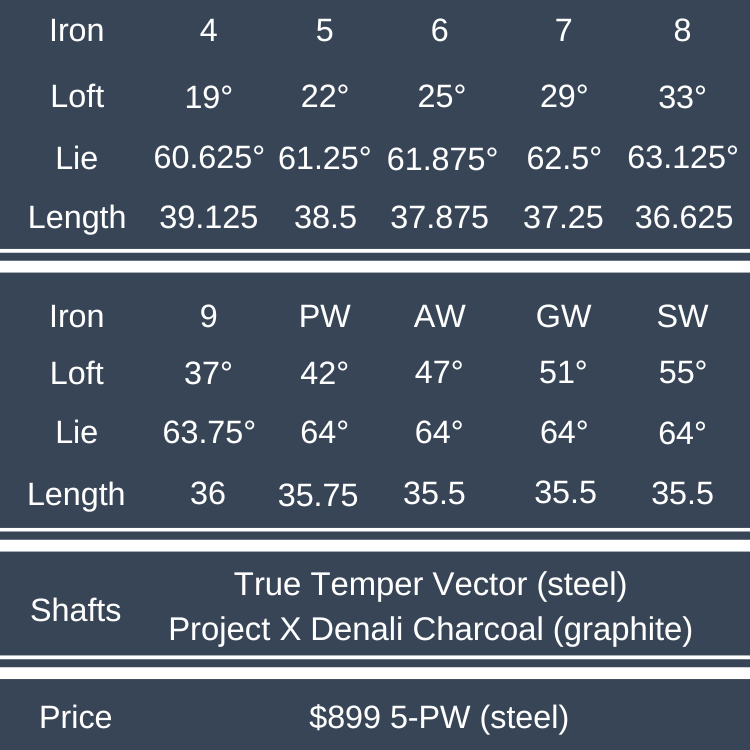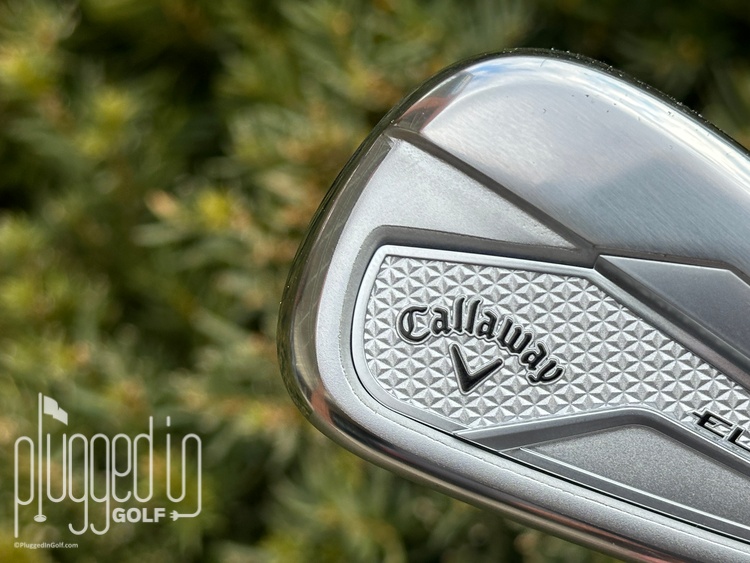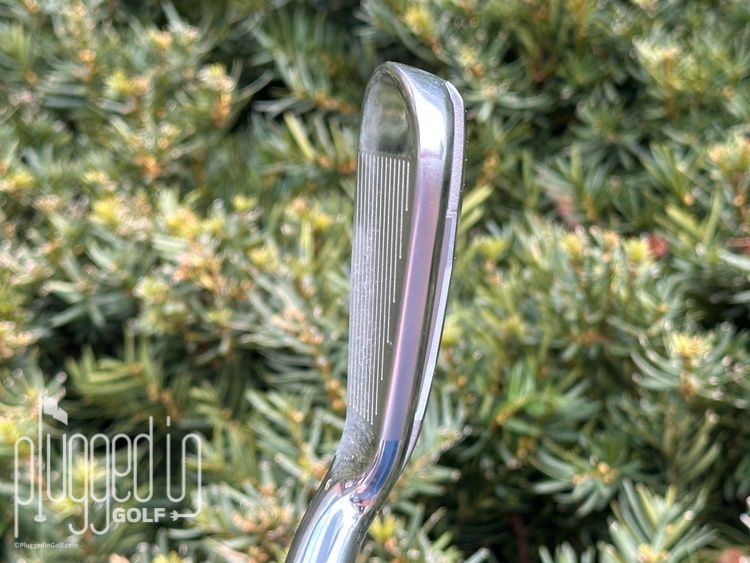50 Words or Less
The Callaway Elyte irons are solid game improvement irons. Sharp looks in the bag. Strong ball speed on and off center. The “one size fits all” choice among Callaway’s numerous Elyte irons.
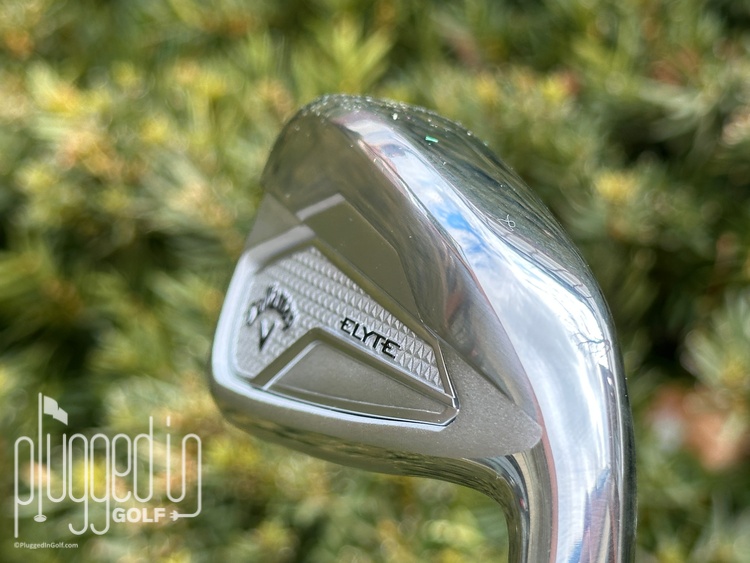
Introduction
The Callaway Elyte family may be the largest in golf right now. With four different irons on top of numerous drivers, fairway woods, and hybrids, Elyte has a monopoly on shelf space. And while all that visibility is great, it can lead to some confusion for the golfer trying to find the best clubs. For this review, I tested the core model Callaway Elyte irons to see which players should consider bagging them.
Looks
In the bag, the Callaway Elyte irons look very sharp. The pattern in the cavity reminds me of the Apex 21 irons, and it gives these clubs a premium look. The branding is moderate, and the geometric designs are interesting without being over the top. Even without the branding, I would have known these were Callaway irons as they have the rounded, slightly bulky look that their GI irons are known for.
What surprised me is how good this iron looks at address. The picture above doesn’t do this club much justice – the top line looks quite thin and the blade length is on the low end for GI irons. Additionally, the mirrored heel and toe make the club look even smaller. The only thing that keeps this from looking like a players iron is the exaggerated offset.
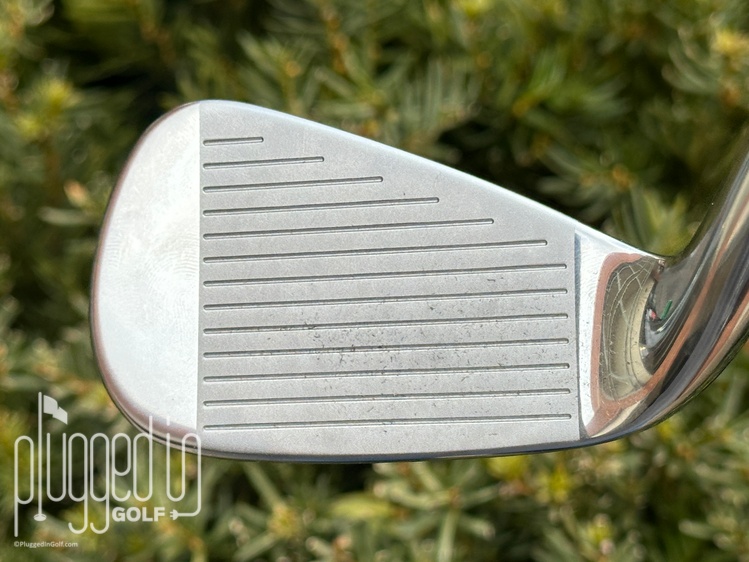
Sound & Feel
Callaway is on the leading edge of face technology in irons which made the sound and feel of the Elyte irons a surprise. I was expecting a feel that was springy and quick paired with a clicky, fast sound. I found neither.
With a premium golf ball, the Callaway Elyte irons produce a round knocking sound at impact. It’s too lively and loud to be called traditional, but it’s pretty far from the quick, snappy sound I expect from a high tech iron. Similarly, the feel is more solid than fast, but it’s not all the way to a soft, forged feel.
The other unexpected element was the level of feedback from the Callaway Elyte irons. On mishits, the feel becomes unpleasantly firm and the sound turns to a jarring “clack”. Locating impact precisely requires careful attention, but it’s easy to distinguish a pure strike from a miss.
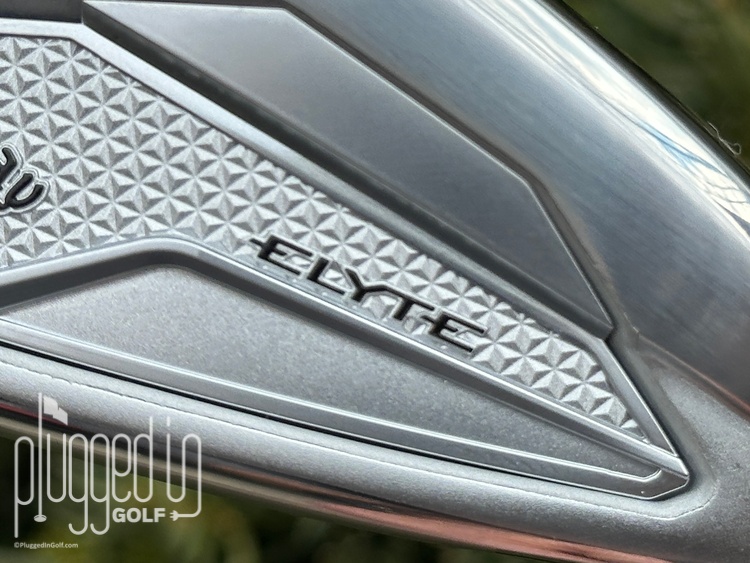
Performance
Let’s start with the basics on the Callaway Elyte irons before placing them into the context of the Elyte iron family. This is a mid-sized game improvement iron with fairly strong lofts and a lot of tech. Powered by Callaway’s Ai10X face and the new Speed Frame construction, it has excellent ball speed on center and very respectable speed on misses.
Looking at accuracy and dispersion, the Elyte irons performed about how I expected relative to their size. They’re not a free pass to the middle of the green, but small misses won’t go streaking sideways. On the other side of that coin, there’s some workability, but they’re far from blades. I’ve always found Callaway’s GI irons a little chunky, which is a mental impediment to feeling in great control over shape and trajectory.
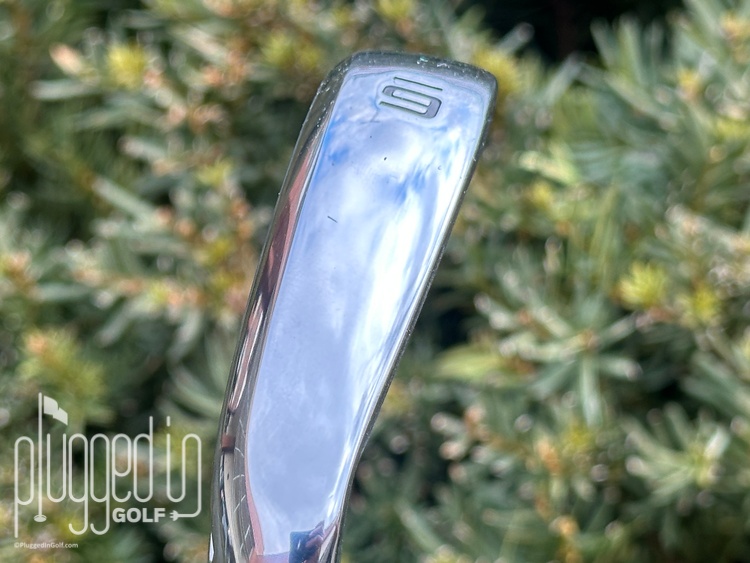
A subtle change from the previous generation, the Paradym Ai Smoke irons [review HERE], is in the sole. Callaway calls this new version “tri-sole design” featuring a “sharper leading edge,” chamfered trailing edge, and a mid-sole designed for forgiveness. I didn’t review the Paradym Ai Smoke, so I can’t offer a direct comparison, but I can say that this sole doesn’t play dramatically different than any Callaway game improvement of the past. For me, the shaping is not dramatic enough to keep it from feeling fairly bulky, though that size does provide good insurance against digging.
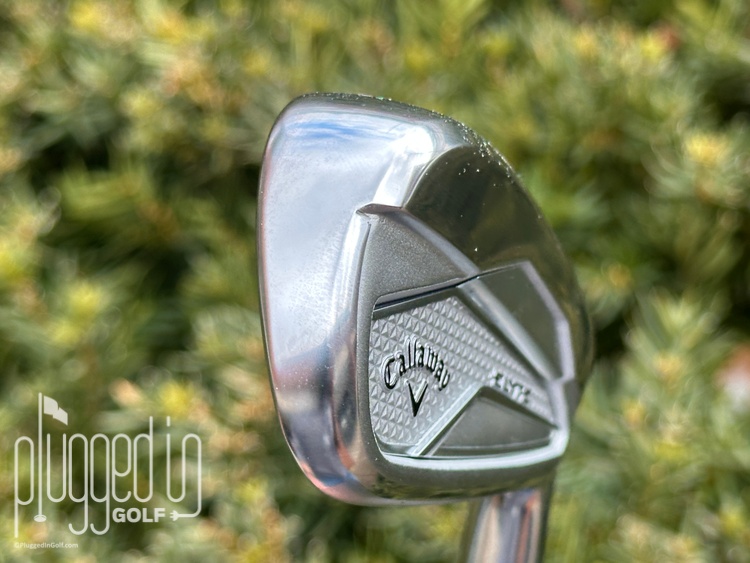
The other three irons in the Elyte family are the Elyte X, Elyte HL, and Elyte Max Fast. The core Callaway Elyte irons are billed as “total performance.” In contrast, the Elyte X is a larger iron built for distance, the Elyte HL has more stopping power, and the Elyte Max Fast is for players with slower swings. Part of these differences come from the loft structure: the Elyte is in the middle with the Elyte X being one degree stronger and the HL and Max Fast one degree weaker.
Beyond the loft specs, the Callaway Elyte irons vary in their size and stock shafts. The Elyte X and Elyte Max Fast are slightly larger than the Elyte and Elyte HL. Project X Denali variants are offered as the graphite option in the Elyte, Elyte X, and Elyte HL. Each also has at least one steel option. The Elyte Max Fast has just one stock shaft – a 40 gram Mitsubishi Vanquish – aimed to help players generate more swing speed.
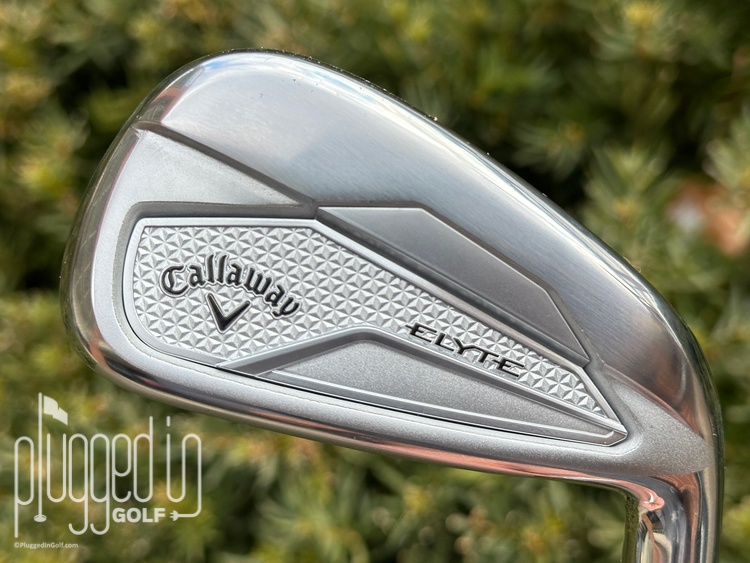
Conclusion
The standard Callaway Elyte irons are the safe choice for the majority of golfers looking to bag a set of Elyte irons. They offer the ball speed, distance, and forgiveness that players have come to expect from Callaway. While I didn’t find anything revolutionary in their performance, I do want to give kudos to Callaway for being offering a new, brand name iron set for under $1,000.
Support Plugged In Golf, Buy HERE
Callaway Elyte Irons Price & Specs
